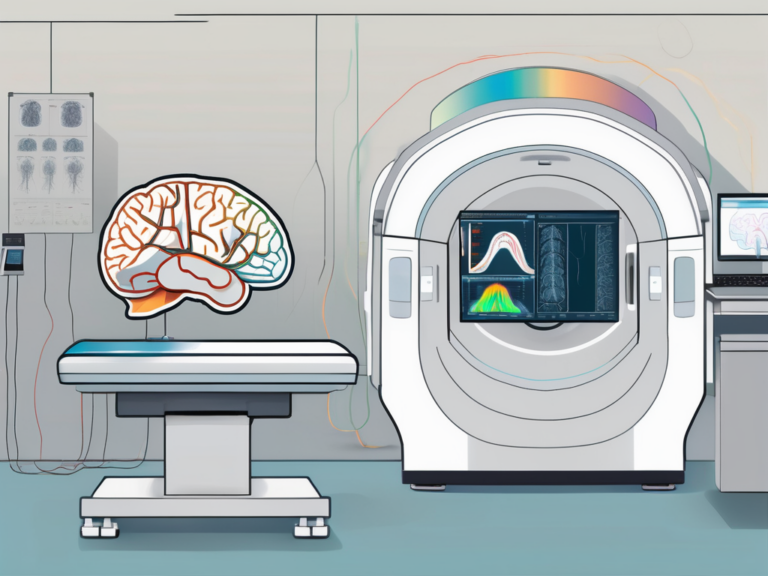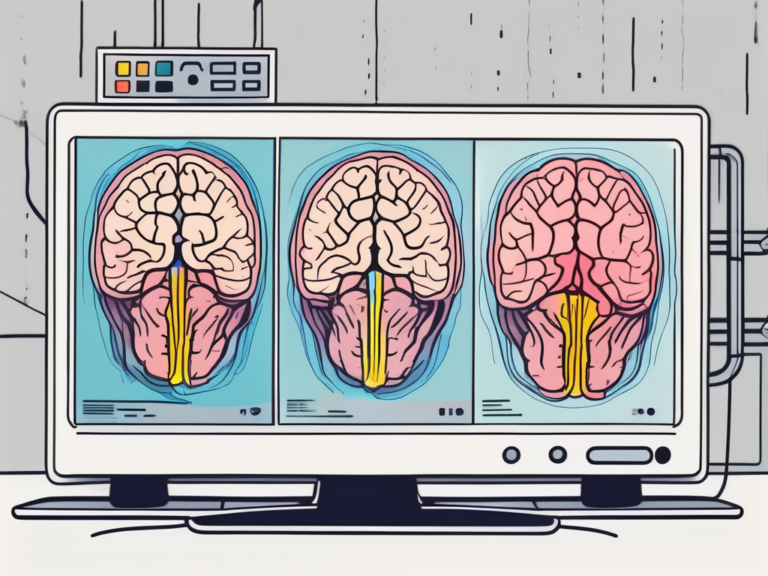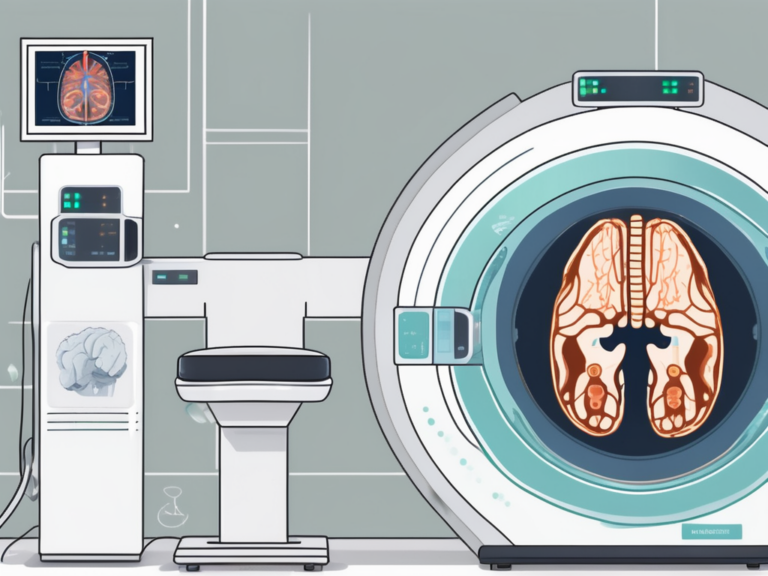which region of the brain will a fmri show as active when a person is looking at a photo?
Understanding the Basics of Brain Function
As a human being, every experience we have is processed and interpreted by our brain. Understanding the intricate workings of the brain is a fascinating subject of study for scientists and researchers. One crucial tool in unraveling the mysteries of brain function is functional magnetic resonance imaging (fMRI). By utilizing this technology, we can gain insights into which regions of the brain become active when a person looks at a photo.
Studying brain function is a multidisciplinary endeavor that combines neuroscience, psychology, and technology. Researchers use a variety of techniques, such as electrophysiology, neuroimaging, and computational modeling, to explore how the brain processes information. These methods allow scientists to observe brain activity in real-time and decipher the underlying mechanisms that govern our thoughts, emotions, and behaviors.
The Role of Different Brain Regions
The brain is a complex organ composed of numerous interconnected regions, each with its specific function. While no single brain region is solely responsible for processing visual information, several regions play critical roles in this cognitive process.
Neuroscientists have identified specialized areas in the brain dedicated to different functions, such as the occipital lobe for visual processing, the temporal lobe for auditory processing, and the frontal lobe for decision-making and cognitive control. These regions work in harmony to create a cohesive perception of the world around us, highlighting the brain’s remarkable ability to integrate diverse information streams.
How the Brain Processes Visual Information
When we look at a photo, a series of intricate neural processes unfolds in our brain. First, visual information from the eyes is relayed to the primary visual cortex located in the occipital lobe. This area is responsible for basic visual perception, such as detecting edges, colors, and shapes. Information then travels through a network of brain regions, each analyzing different aspects of the visual stimulus. These regions include the fusiform face area (FFA), responsible for facial recognition, and the parahippocampal place area (PPA), which helps identify environmental scenes.
Moreover, the brain’s processing of visual information is not limited to the perception of static images. Dynamic visual stimuli, such as moving objects or changing scenes, engage additional brain regions involved in motion detection and tracking. The integration of visual cues with other sensory modalities, such as auditory or tactile inputs, further enriches our perceptual experience and underscores the brain’s remarkable adaptability and plasticity.
The Science Behind fMRI Technology
To understand which brain regions activate when we view a photo, we need to examine the principles and mechanisms of fMRI technology.
Functional Magnetic Resonance Imaging (fMRI) has revolutionized our ability to study the human brain. By utilizing powerful magnetic fields and radio waves, fMRI allows researchers to observe changes in blood flow and oxygen levels in the brain, providing valuable insights into neural activity. This non-invasive technique has become a cornerstone in cognitive neuroscience, enabling scientists to map out brain functions with unprecedented detail.
The Principle of fMRI
fMRI measures changes in blood flow and oxygenation levels in the brain. When a specific brain region becomes active, blood flow to that area increases. This increased blood flow is accompanied by an increase in oxygenated blood. By detecting these variations, fMRI can map brain activity in real-time as a person engages with visual stimuli like photos.
Moreover, fMRI technology has advanced significantly since its inception. Innovations such as high-resolution imaging and multi-modal integration have enhanced the precision and scope of fMRI studies. Researchers can now not only pinpoint the general location of brain activity but also delve into the intricate networks and connections between different regions, providing a more comprehensive understanding of cognitive processes.
Interpreting fMRI Results
Interpreting fMRI results requires careful analysis. Researchers use statistical techniques to determine which brain regions are more active when a person looks at a specific photo. These techniques help identify brain regions that consistently show heightened activity during visual perception tasks. However, it is important to remember that fMRI results are correlative and cannot establish causation. They provide valuable clues to the brain regions involved but not a complete understanding of the underlying mechanisms.
Furthermore, the field of fMRI research is constantly evolving, with new methodologies and algorithms being developed to enhance the accuracy and reliability of results. Collaborations between neuroscientists, physicists, and computer scientists continue to push the boundaries of what fMRI can reveal about the complexities of the human brain. As technology advances and our knowledge deepens, fMRI remains a vital tool in unraveling the mysteries of cognition and perception.
The Brain’s Response to Visual Stimuli
The visual pathway in the brain is responsible for processing and interpreting visual information received from the eyes.
Understanding how the brain responds to visual stimuli is a fascinating area of study that involves intricate neural processes and complex interactions between various brain regions. The brain’s ability to perceive, analyze, and interpret visual information is a remarkable feat that showcases the complexity and sophistication of the human mind.
The Visual Pathway in the Brain
When a person looks at a photo, the visual information travels through a cascade of brain regions, collectively known as the visual pathway. This pathway starts with the primary visual cortex and extends to higher-order regions, including the visual association cortex. Along this pathway, specialized regions process different aspects of the visual scene, such as color, motion, and object recognition.
As the visual information progresses through the visual pathway, it undergoes intricate processing that allows the brain to extract meaningful information from the visual input. This processing involves a series of neural computations and transformations that ultimately result in the perception of a coherent visual scene. The dynamic interplay between different brain regions within the visual pathway highlights the complexity of visual processing and the brain’s remarkable ability to make sense of the external world.
Brain Regions Involved in Image Recognition
Image recognition is a complex cognitive process that involves several brain regions. The inferior temporal cortex, for example, plays a crucial role in object recognition and categorization. The visual association cortex also contributes to image recognition by integrating information from different regions and forming a coherent perception of the visual world. Other regions, such as the posterior parietal cortex and prefrontal cortex, help in organizing, interpreting, and making sense of visual stimuli.
The intricate network of brain regions involved in image recognition highlights the distributed nature of visual processing in the brain. Each region specializes in different aspects of visual analysis, such as shape recognition, spatial awareness, and memory retrieval. The coordinated activity of these regions allows for seamless and rapid recognition of familiar objects and scenes, showcasing the efficiency and adaptability of the brain’s visual processing system.
The Impact of Different Types of Photos on Brain Activity
Not all photos evoke the same response in the brain. Emotional content, familiarity, and novelty play a significant role in shaping how the brain reacts to different types of photos.
Understanding the intricate relationship between photos and brain activity is a fascinating area of study that delves into the depths of human cognition and perception. The way our brains process visual information and the subsequent effects on our emotions and behaviors are a complex interplay of neural networks and psychological processes.
Emotional Responses and Brain Activity
Emotional photos have a strong impact on our brain activity. When exposed to emotionally charged stimuli, brain regions involved in emotion processing, such as the amygdala and insula, become highly active. These regions work in concert with other brain areas to process and evaluate emotional information, leading to subjective feelings and physiological responses.
The intricate dance of neurotransmitters and neural pathways involved in emotional processing highlights the profound influence that photos can have on our mental and physical states. From triggering memories to eliciting empathetic responses, emotional photos have the power to deeply impact our brain activity and shape our perceptions of the world around us.
The Effect of Familiar and Unfamiliar Images
Seeing familiar faces or places activates specific brain regions associated with memory and recognition. The fusiform face area in the temporal lobe, for instance, responds preferentially to familiar faces. On the other hand, unfamiliar or novel images tend to elicit heightened activation in brain regions linked to attention and exploration, like the prefrontal cortex and the hippocampus.
The contrast between familiar and unfamiliar images sheds light on how our brains process visual stimuli based on prior experiences and learned associations. Familiarity provides a sense of comfort and recognition, activating neural circuits that reinforce our sense of identity and belonging. In contrast, novel images spark curiosity and engagement, driving neural activity that fuels our innate desire for exploration and discovery.
Future Research Directions in Neuroimaging
fMRI technology has opened up new avenues for research and potential applications in the field of neuroimaging. With its ability to measure brain activity by detecting changes in blood flow and oxygenation, fMRI has revolutionized our understanding of the human brain.
Potential Applications of fMRI
Beyond understanding the brain’s response to photos, fMRI has a vast range of potential applications. It can help investigate various neurological and psychiatric disorders, contributing to the development of more effective treatments. For example, fMRI studies have shed light on the neural mechanisms underlying conditions such as depression, schizophrenia, and Alzheimer’s disease, offering insights into potential targets for therapeutic interventions.
In addition to clinical applications, fMRI is a valuable tool in cognitive neuroscience research. By examining brain activity during various cognitive tasks, researchers can gain insights into the neural basis of human cognition. This knowledge has implications for fields such as education, where understanding how the brain learns can inform teaching strategies and curriculum design.
Furthermore, fMRI has the potential to advance the field of brain-computer interfaces (BCIs) and neurofeedback techniques. BCIs aim to establish direct communication between the brain and external devices, enabling individuals with motor disabilities to control prosthetic limbs or interact with computers using their thoughts. Neurofeedback techniques, on the other hand, involve training individuals to regulate their brain activity for therapeutic purposes. By providing real-time feedback on brain activity, fMRI can contribute to the development of more precise and effective BCIs and neurofeedback protocols.
Limitations and Challenges in fMRI Research
While fMRI is a powerful tool, it is not without limitations. Challenges arise due to the constrained environment of an fMRI scanner, including motion artifacts and issues related to the interpretation of data. Researchers have made significant progress in addressing these challenges by developing advanced motion correction techniques and refining data analysis methods.
Another limitation of fMRI is its reliance on blood flow and oxygenation changes as indirect measures of neuronal activity. While changes in blood flow are closely linked to neural activity, they do not provide a direct measure of the electrical signals generated by neurons. To overcome this limitation, researchers are exploring alternative imaging techniques, such as electroencephalography (EEG) and magnetoencephalography (MEG), which directly measure neural activity with high temporal resolution.
Despite these limitations, fMRI continues to be a valuable tool in advancing our understanding of the brain. As researchers refine techniques and develop new methodologies, the potential for fMRI to unravel the complexities of brain function becomes even more promising.
In conclusion, fMRI provides valuable insights into the brain regions involved when a person looks at a photo. By understanding the basics of brain function, the science behind fMRI technology, the brain’s response to visual stimuli, and the impact of different types of photos, we can delve into the intricate workings of the human brain. As research in neuroimaging advances, future directions hold promising potential for enhancing our knowledge of the brain and its remarkable capabilities.






